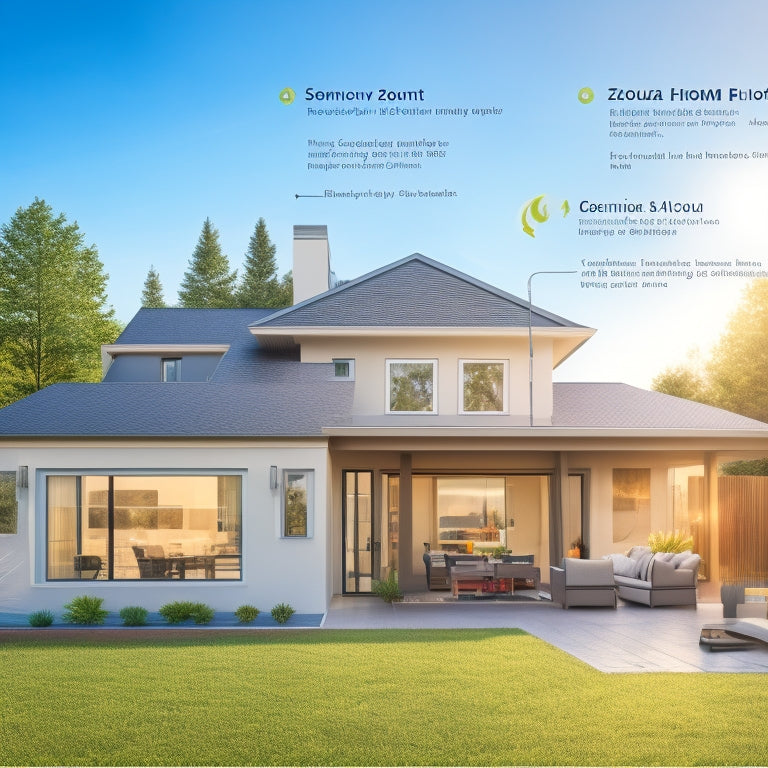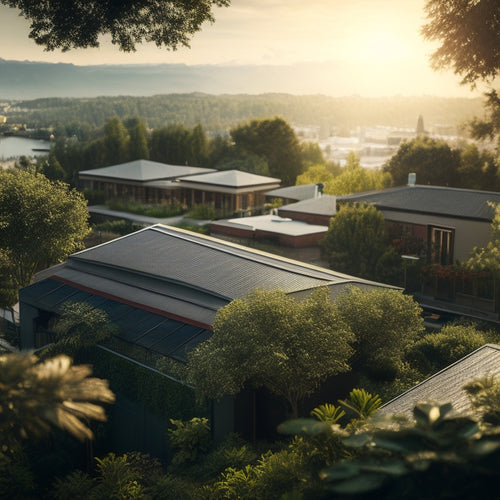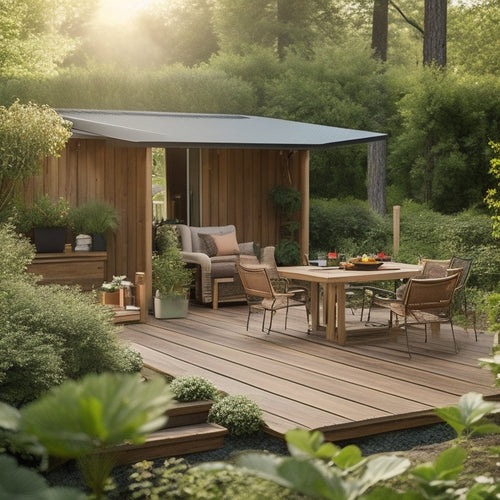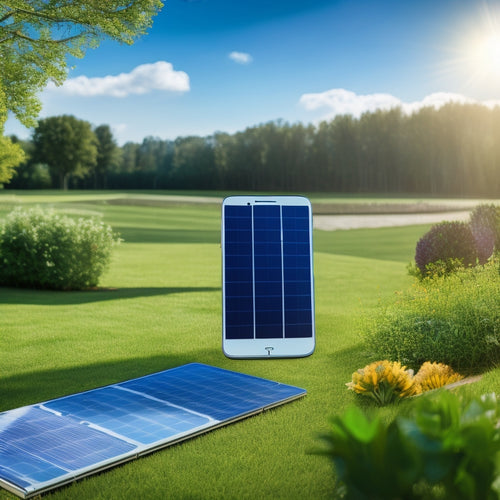
Optimize Home Comfort: HVAC Zoning for Energy Savings
Share
You're optimizing your home comfort by zoning your heating, ventilation, and air conditioning (HVAC) system, which can lead to energy savings of up to 30% by customizing temperature and airflow for unique areas of your home. This customized approach considers factors like windows, insulation, and occupancy, reducing energy waste and enhancing overall comfort. By dividing your space into zones, you can heat or cool specific areas independently, ensuring you're not wasting energy on unoccupied rooms. As you investigate HVAC zoning, you'll reveal more opportunities to fine-tune your system for maximum energy efficiency and comfort, and realize the full potential of a perfectly zoned home.
Key Takeaways
- HVAC zoning optimizes energy consumption by controlling temperature in different areas, reducing energy waste and energy bills.
- Customized temperature control in each zone enhances comfort and flexibility, supporting unique needs and lifestyle preferences.
- Thermal zoning can save up to 30% on energy bills and reduce overall energy consumption by 20-30%, according to the U.S. Department of Energy.
- Proper system design, component integration, and ductwork installation are crucial for peak performance, thermal comfort, and energy efficiency.
- Smart thermostats and automation features can further optimize energy savings through scheduling, geofencing, and remote access capabilities.
What Is HVAC Zoning?
Your heating, ventilation, and air conditioning (HVAC) system is likely a significant contributor to your energy bills. Understanding HVAC basics is vital to optimizing your system's performance.
HVAC zoning is a method that allows you to control the temperature in different areas of your home, ensuring that each zone receives the desired amount of heating or cooling. This approach takes into account the unique characteristics of each zone, such as windows, insulation, and occupancy.
By dividing your home into zones, you can customize the temperature and airflow to each area, resulting in increased efficiency and comfort. Much like how companies like DHL and Anheuser-Busch are reducing their carbon footprint through strategic fleet electrification, you can reduce energy waste in your home by implementing HVAC zoning.
The zoning advantages include reduced energy waste, lower energy bills, and a more comfortable living space.
Benefits of Zoned Heating
A well-designed zoned heating system can alter your living space into a comfortable oasis, where every room is customized to your desired temperature.
With zoned heating advantages, you'll experience improved comfort and flexibility. You can heat or cool specific areas of your home independently, ensuring that each room is adjusted to your preferences.
This means you can crank up the heat in your living room on a chilly winter morning, while keeping your bedroom at a cozy temperature.
By incorporating solar-powered solutions, you can reduce your carbon footprint and energy costs.
You're in control, and your home becomes a reflection of your unique needs and lifestyle.
Zoned heating gives you the freedom to create the perfect environment for relaxation, entertainment, or productivity, whenever and wherever you want it.
Energy Savings Potential
The thermal zoning strategy optimizes energy consumption by allocating heating and cooling resources only to occupied areas, reducing energy waste in unoccupied zones. By doing so, you can markedly reduce your energy consumption, leading to substantial utility savings. According to the U.S. Department of Energy, a zoned HVAC system can save homeowners up to 30% on their energy bills.
| Energy Efficiency | Utility Savings |
|---|---|
| 20-30% reduction in energy consumption | $300-$500 annual savings |
| Optimized heating and cooling resource allocation | 10-20% reduction in energy bills |
| Reduced energy waste in unoccupied zones | Increased comfort and flexibility |
Zone Control Systems Explained
You're about to investigate the core of HVAC zoning: zone control systems.
You'll learn the basics of zone control, which involves dividing your space into areas with distinct heating and cooling needs. This approach is similar to how renewable energy solutions can be customized for fleet needs, guaranteeing readiness.
From there, you'll examine system design considerations and component integration options to secure a seamless, energy-efficient setup.
Zone Control Basics
Configuring your HVAC system with zone control basics allows for precise temperature management and energy efficiency. You can divide your home into different zones, each with its own thermostat, to control the temperature individually.
Shifting to solar energy greatly lowers carbon footprint and greenhouse gas emissions solar energy adoption, which can be applied to HVAC systems for a more environmentally friendly approach.
There are two primary zone types: single-stage and multi-stage. Single-stage zones use a single thermostat to control the entire zone, while multi-stage zones use multiple thermostats to control different areas within the zone.
Temperature balancing is vital in zone control, as it guarantees that the temperature in each zone is consistent and comfortable. By balancing the temperature, you can eliminate hot and cold spots, and reduce energy waste.
With zone control basics, you have the freedom to customize your home's temperature to your liking, while also saving energy and reducing your utility bills.
System Design Considerations
Designing a zone control system requires careful planning and consideration of several key factors to guarantee peak performance and energy efficiency. You need to verify that your system is customized to your specific needs and preferences.
When designing your system, consider enhancing your solar panel array design, as strategic orientation can boost energy production.
To achieve ideal thermal comfort and system efficiency, consider the following design factors:
-
Zone layout: Divide your home into zones based on occupancy, insulation, and window orientation to verify precise temperature control.
-
Ductwork design: Design and install ducts that can handle the airflow and pressure requirements of your zoning system.
-
Equipment selection: Choose HVAC equipment that's compatible with your zoning system and can provide the necessary heating and cooling capacities.
- Control strategy: Develop a control strategy that integrates your zoning system with your HVAC equipment to enhance energy efficiency and thermal comfort.
Component Integration Options
As you integrate your zone control system, the crucial next step is to connect the various components that will work together to optimize energy efficiency and thermal comfort.
You'll need to guarantee component compatibility, as mismatched parts can lead to integration challenges and reduced system performance. Your zone control panel will serve as the central hub, connecting to sensors, thermostats, and dampers.
These components must communicate seamlessly to regulate airflow and temperature. When selecting components, consider factors like voltage, communication protocols, and software compatibility.
Ductwork and Sensor Placement
Your HVAC zoning system's ductwork is critical to its overall performance and energy efficiency. Properly designed and installed ductwork guarantees that heated or cooled air reaches every corner of your home, maximizing ductwork efficiency.
To achieve peak performance, consider the following sensor placement strategies:
-
Zone dampers: Install sensors near zone dampers to accurately detect airflow and pressure changes.
-
Return air ducts: Place sensors in return air ducts to monitor temperature and humidity levels.
-
Supply air ducts: Install sensors in supply air ducts to measure airflow and temperature.
- Room sensors: Place room sensors in living spaces to provide real-time temperature and humidity feedback, guaranteeing sensor accuracy and peak comfort.
Sizing and Installation Considerations
When designing your HVAC zoning system, you'll need to determine the system design requirements, including the number of zones, zone sizes, and airflow requirements.
You'll also need to select equipment that meets specific factors, such as zone valve sizing, damper actuator selection, and control system compatibility.
System Design Requirements
Proper system design is critical to the success of an HVAC zoning project, and sizing and installation considerations are paramount to achieving energy efficiency and peak performance.
You need to guarantee that your system is designed to optimize layout efficiency, reducing energy waste and maximizing comfort. To achieve this, consider the following key factors:
-
Zone loads: Calculate the specific cooling and heating requirements for each zone to determine the ideal system size.
-
Ductwork design: Optimize duct layout to minimize pressure drops, reduce energy losses, and guarantee consistent airflow.
-
Equipment placement: Strategically locate equipment to minimize noise, reduce visual impact, and facilitate maintenance access.
- System integration: Ensure seamless communication between thermostats, dampers, and HVAC equipment to optimize system efficiency.
Equipment Selection Factors
Choosing the right equipment is essential for achieving ideal performance and energy efficiency in an HVAC zoning system.
When selecting equipment, you'll want to take into account factors that impact system efficiency, such as the type and size of the air handler, furnace, or heat pump.
Verify that the equipment is compatible with the zoning system's control panel and sensors.
Proper sizing of the equipment is critical, as undersized or oversized units can lead to reduced system efficiency and increased energy consumption.
Additionally, take into account the equipment's SEER (Seasonal Energy Efficiency Ratio) and AFUE (Annual Fuel Utilization Efficiency) ratings to guarantee maximum energy savings.
Installation Quality Control
Your HVAC zoning system's performance and energy efficiency hinge on careful installation quality control. A poorly installed system can lead to reduced energy savings, increased energy consumption, and even system failure.
To guarantee peak performance, it's vital to follow installation best practices and quality assurance measures.
Here are key considerations to keep in mind:
-
Proper sizing: Ascertain that the HVAC equipment is correctly sized for your home and zoning configuration.
-
Correct ductwork installation: Verify that ducts are properly sealed, insulated, and configured for peak airflow.
-
Zone dampers and sensors: Install zone dampers and sensors to control airflow and monitor zone temperatures.
- System testing and balancing: Perform thorough testing and balancing to guarantee the system is operating at peak performance.
Smart Thermostats and Integration
In a quest for ideal temperature control, smart thermostats have emerged as an essential component in HVAC zoning systems, allowing for seamless integration with various components. You can now enjoy precise control over your home's temperature, humidity, and ventilation. Smart thermostats can learn your schedule and preferences, optimizing energy efficiency and comfort.
| Feature | Benefits | Energy Savings |
|---|---|---|
| Scheduling | Automates temperature adjustments based on your daily routine | Up to 10% |
| Geofencing | Adjusts temperature when you leave or arrive home | Up to 5% |
| Remote Access | Control your thermostat from anywhere using your smartphone | Up to 3% |
| Energy Reporting | Provides detailed understanding into your energy consumption | Up to 2% |
Humidity Control and Ventilation
Humidity levels and air circulation greatly impact indoor air quality, making humidity control and ventilation essential components of an HVAC zoning system.
You want to guarantee that your system can manage humidity levels effectively, especially in areas prone to high humidity like basements or bathrooms. This is where humidity management comes in.
Here are some ventilation methods you can incorporate into your HVAC zoning system:
-
Whole-house ventilation: This method involves installing a central ventilation system that circulates air throughout your entire home.
-
Spot ventilation: This method involves installing ventilation systems in specific areas, such as bathrooms or kitchens, to remove moisture and pollutants.
-
Heat recovery ventilation: This method involves installing a system that captures heat from exhaust air and transfers it to fresh air entering your home.
- Energy recovery ventilation: This method involves installing a system that captures both heat and moisture from exhaust air and transfers it to fresh air entering your home.
Maintenance and Upkeep Essentials
You've invested in an HVAC zoning system to optimize energy efficiency and indoor air quality, but it's crucial to remember that regular maintenance and upkeep are necessary to confirm the system continues to perform at its best.
To guarantee your system runs smoothly, follow this maintenance schedule:
| Task | Frequency | Importance |
|---|---|---|
| Filter replacement | Every 1-3 months | High |
| System inspections | Semi-annually | Medium |
| Seasonal checks | Quarterly | Medium |
Additionally, consider performing the following tasks:
- Thermostat calibration and duct cleaning annually
- Refrigerant level checks and airflow adjustments bi-annually
- Insulation evaluation and energy audits every 5 years
Frequently Asked Questions
Can I Retrofit My Existing HVAC System for Zoning?
Imagine releasing the full potential of your existing HVAC system! Yes, you can retrofit it for zoning, enjoying benefits like reduced energy waste and increased comfort. Weigh the installation costs against the long-term zoning benefits, and take control of your home's climate freedom.
How Many Zones Are Recommended for an Average-Sized Home?
You'll typically find that 3-5 zones are recommended for an average-sized home, depending on factors like layout, insulation, and window orientation, allowing for customized zone configurations that enhance energy efficiency and your overall freedom from temperature fluctuations.
Are Zoning Systems Compatible With Radiant Floor Heating?
As you traverse the world of heating solutions, you'll find that zoning systems harmonize beautifully with radiant floor heating, unfastening zoning advantages like precision temperature control and radiant efficiency, granting you the freedom to tailor your comfort to your heart's desire.
Can I Control Individual Zones Remotely Using My Smartphone?
You can control individual zones remotely using your smartphone through smart thermostat integration, allowing you to adjust temperatures and access remote temperature management features, giving you the freedom to customize your comfort from anywhere.
Do Zoning Systems Work With Heat Pumps and Dual-Fuel Systems?
You'll be pleased to know that zoning systems are compatible with heat pumps and dual-fuel systems, maximizing zoning benefits by optimizing heat pump efficiency and allowing you to control your comfort with precision, freedom, and energy savings.
Related Posts
-

Why Choose Cool Roofs in Scorching Climates?
You opt for cool roofs in scorching climates because they enable you to reclaim control over your energy consumption ...
-

Green Deck Options: Earth-Conscious Choices for Your Home
You're looking for a deck that not only enhances your home's exterior but also aligns with your eco-friendly values. ...
-

7 Best Solar Panel Upkeep Apps for Homeowners
You can optimize your solar panel's energy output and efficiency by up to 20% with regular maintenance, which is wher...


